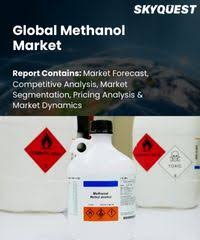Normal
0
false
false
false
EN-US
X-NONE
X-NONE
/* Style Definitions */
table.MsoNormalTable
{mso-style-name:”Table Normal”;
mso-tstyle-rowband-size:0;
mso-tstyle-colband-size:0;
mso-style-noshow:yes;
mso-style-priority:99;
mso-style-qformat:yes;
mso-style-parent:””;
mso-padding-alt:0cm 5.4pt 0cm 5.4pt;
mso-para-margin-top:0cm;
mso-para-margin-right:0cm;
mso-para-margin-bottom:10.0pt;
mso-para-margin-left:0cm;
line-height:115%;
mso-pagination:widow-orphan;
font-size:11.0pt;
font-family:”Calibri”,”sans-serif”;
mso-ascii-font-family:Calibri;
mso-ascii-theme-font:minor-latin;
mso-fareast-font-family:”Times New Roman”;
mso-fareast-theme-font:minor-fareast;
mso-hansi-font-family:Calibri;
mso-hansi-theme-font:minor-latin;
mso-bidi-font-family:”Times New Roman”;
mso-bidi-theme-font:minor-bidi;}
Global Methanol Market Insights
Global Methanol Market size was valued at USD 30.7 billion in 2021 and is poised to grow from USD 31.74 billion in 2022 to USD 41.48 billion by 2030, growing at a CAGR of 3.4% in the forecast period (2023-2030).
Methanol, also known as methyl alcohol, is a colorless, flammable, and volatile liquid. It is the simplest form of alcohol and has the chemical formula CH3OH. Methanol is commonly produced from natural gas, coal, and renewable sources such as biomass and waste. It is a versatile chemical with a wide range of applications. It is primarily used as a feedstock for the production of formaldehyde, acetic acid, and other chemicals. It is also used as a solvent, fuel additive, and antifreeze. Methanol can be blended with gasoline to create a methanol-gasoline blend, which can be used in vehicles that are designed to run on gasoline. It is also used as fuel in fuel cells and in some specialized vehicles that are specifically designed to run on methanol. It has a number of advantages as a fuel and feedstock. It is a relatively low-cost and widely available chemical that can be produced from a variety of feedstocks. It is also less toxic than other chemicals, such as benzene and toluene, which are commonly used in the chemical industry. However, methanol can be highly flammable and toxic if not handled properly, so it must be carefully stored, transported, and used according to strict safety guidelines.
The global methanol market was a significant and growing market, with a wide range of applications in industries such as chemicals, automotive, construction, and energy. The chemical industry was the largest consumer of methanol, accounting for more than half of global demand. Methanol is used as a feedstock for the production of formaldehyde, acetic acid, and other chemicals, which are used to make a wide range of products such as plastics, paints, adhesives, and textiles. The automotive industry was also a growing market for methanol, driven by increasing interest in low-emissions and renewable fuels. Methanol can be used as a fuel in modified gasoline engines or converted to dimethyl ether (DME) for use in diesel engines. This has led to the development of several pilot projects and initiatives to explore the potential of methanol as a low-emissions alternative fuel. Other growing markets for methanol include construction, where methanol is used as a solvent and in the production of formaldehyde-based resins and adhesives, and energy, where methanol can be used as a fuel for power generation or as a storage medium for renewable energy. The global market is expected to continue to grow in the coming years, driven by increasing demand for chemicals and alternative fuels, as well as by the potential for new applications in emerging markets such as energy storage and carbon capture. However, the market may also face challenges related to volatility in feedstock prices, competition from alternative fuels, and environmental concerns related to methanol production and use.
Global Methanol Market Segmental Analysis
Global Methanol Market is segmented on the basis of feedstock, application and region. By feedstock, the Methanol Market is segmented natural gas, coal, biomass and others. By application, Methanol Market is segmented into formaldehyde, acetic acid, MTBE, DME, fuel blending and others. By region, the Methanol Market is segmented into North America, Europe, Asia Pacific, Middle East and Africa, and Latin America.
Methanol Market Analysis by Feedstock
The natural gas feedstock segment dominates the global methanol market, driven by the availability of low-cost natural gas in many regions. Natural gas is the most common feedstock used to produce methanol, accounting for more than 90% of global production. Methane, the primary component of natural gas, is converted into methanol using a process called steam methane reforming (SMR). SMR involves reacting methane with steam and a catalyst to produce synthesis gas (syngas), which is then converted into methanol.
The coal feedstock segment is also significant, particularly in China, where coal is the primary feedstock for methanol production. Coal is another feedstock used to produce methanol, although it accounts for a much smaller percentage of global production compared to natural gas. Coal is first gasified to produce syngas, which is then converted into methanol. This process is called coal-to-methanol (CTM) and is commonly used in China.
Methanol Market Analysis by Application
Formaldehyde is the largest application segment of the global methanol market, accounting for more than 30% of the total demand. Formaldehyde is used as a feedstock for the production of resins, plastics, and textiles, among other products. Formaldehyde-based resins are widely used in the construction and furniture industries, as well as in the manufacturing of laminates and composite materials.
Acetic acid is another significant application segment of the global methanol market, accounting for more than 20% of the total demand. Acetic acid is used as a feedstock for the production of vinyl acetate monomer (VAM), which is used to make a variety of products including adhesives, coatings, and films.


